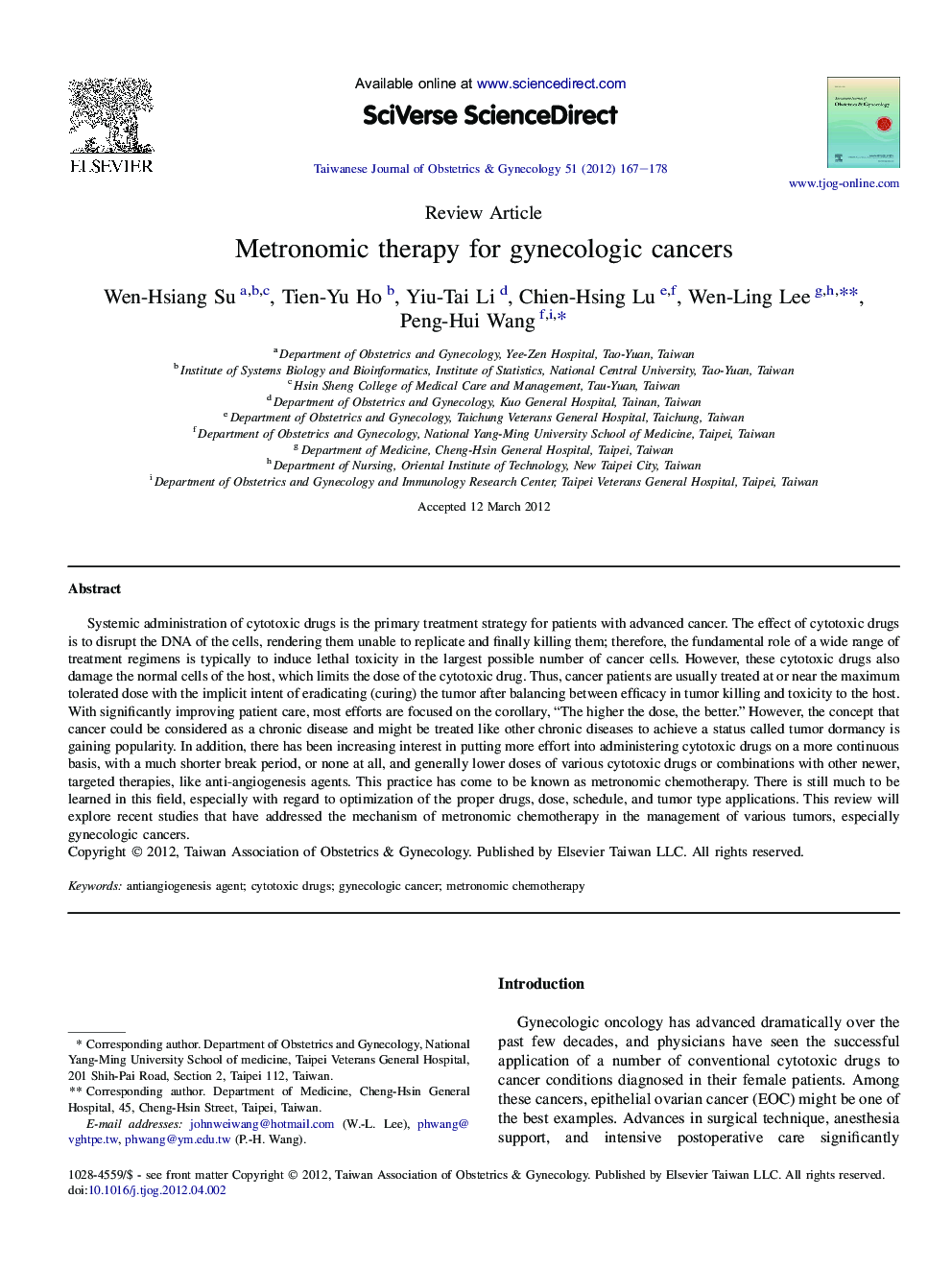| Article ID | Journal | Published Year | Pages | File Type |
|---|---|---|---|---|
| 3975422 | Taiwanese Journal of Obstetrics and Gynecology | 2012 | 12 Pages |
Systemic administration of cytotoxic drugs is the primary treatment strategy for patients with advanced cancer. The effect of cytotoxic drugs is to disrupt the DNA of the cells, rendering them unable to replicate and finally killing them; therefore, the fundamental role of a wide range of treatment regimens is typically to induce lethal toxicity in the largest possible number of cancer cells. However, these cytotoxic drugs also damage the normal cells of the host, which limits the dose of the cytotoxic drug. Thus, cancer patients are usually treated at or near the maximum tolerated dose with the implicit intent of eradicating (curing) the tumor after balancing between efficacy in tumor killing and toxicity to the host. With significantly improving patient care, most efforts are focused on the corollary, “The higher the dose, the better.” However, the concept that cancer could be considered as a chronic disease and might be treated like other chronic diseases to achieve a status called tumor dormancy is gaining popularity. In addition, there has been increasing interest in putting more effort into administering cytotoxic drugs on a more continuous basis, with a much shorter break period, or none at all, and generally lower doses of various cytotoxic drugs or combinations with other newer, targeted therapies, like anti-angiogenesis agents. This practice has come to be known as metronomic chemotherapy. There is still much to be learned in this field, especially with regard to optimization of the proper drugs, dose, schedule, and tumor type applications. This review will explore recent studies that have addressed the mechanism of metronomic chemotherapy in the management of various tumors, especially gynecologic cancers.
